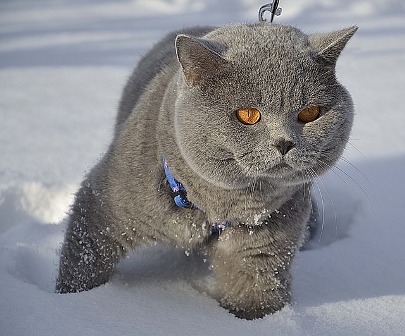How to Know If a Cat Is Overweight
How to Know If a Cat Is Overweight
Even though indoor cats can live longer than outdoor ones because they spend their time in safety place, it could be challenging to keep a cat fit and slim. Staying indoors does not provide a lot of stimuli that can motivate the cat to explore its environment and burn its calories. They need a lot of plays and joint activities with their owners. Their wild ancestors had hunted prey or defended themselves as from biggest animals, during the majority of their days. This type of a lifestyle requires strong muscles and a good condition, which make them healthy and firm. In a modern environment, they have comfort, but lack physical engagement. Encouraging them to play will help them to run more, jump further and stay in shape. In order to determine whether the cat is overweight and need more exercise, the article “How Do I Determine If My Cat Is Overweight?” explains the simple methods.
How to Know If a Cat Is Overweight
To perform the rating, we first feel the cat’s ribs. We should be able to quite easily feel the ribs. There should be a slight amount of fat over them, but each rib should be distinct. If you can see the ribs, the pet is too thin. If you can not feel them at all, the pet is very overweight.
Second, check the area near the base of the tail. There should be a slight fat covering over this area and it should feel smooth. If the bones protrude, the pet is too thin; if you can not feel any bones at all, the pet is very overweight.
Third, feel other bony prominences on the pet’s body such as the spine, shoulders, and hips. Again, you should be able to feel a small amount of fat over these areas. If these bones are easily felt or visible, the cat is too thin. If you can not feel the bones beneath the layer of fat, the animal is obviously overweight.
Fourth, look at your cat from above. The animal should have a definite waist behind the ribs. If the waist is extreme, or again, bony prominences are visible, the animal is too thin. If there is no waist, or worse yet, the area between the ribs and hips is wider than the hips or ribs, the cat is grossly overweight.
Fifth, look at the cat from the side. Cats should have an abdominal tuck, i.e., the area behind the ribs should be smaller in diameter than the chest. An animal who is too thin will have a very severe abdominal tuck. Overweight animals will have no abdominal tuck.
To keep the cat fit will prevent it many health risks, which go hand in hand with obesity. As veterinarians suggest, it will help the cat to stay healthy and live longer. Many diseases appear as a direct consequence of the cat has been overweight, such as diabetes, heart disease, arthritis, hepatic lipidosis, etc. The regular lifespan of a healthy cat stretches between 6 and 12 years while of the overweight it reduces to 6 to 12 years. The greater risk for developing obesity have the cats, which live indoors, are on a poor diet, rarely exercise, are neutered and are of the male gender. Naturally, this risk increases in older cats. By doing regular checkups, the time spent together with this lovely pet can be significantly prolonged.










